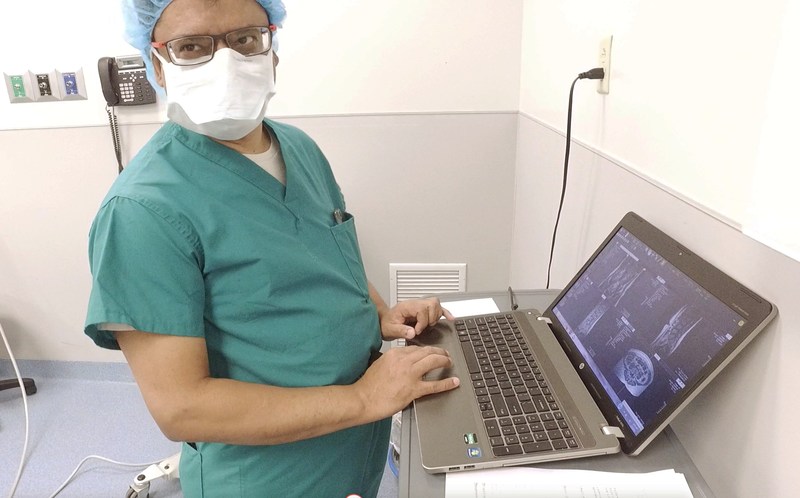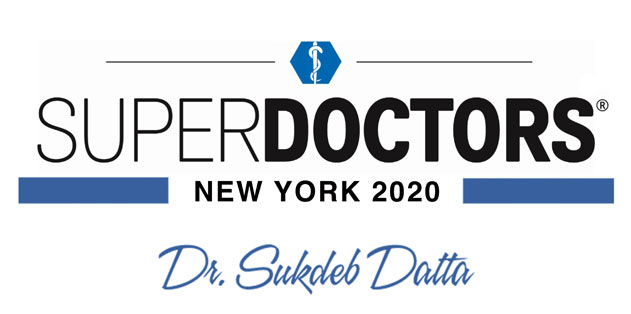
Sukdeb Datta, MD, is an interventional pain management specialist and founder of Datta Endoscopic Back Surgery and Pain Center in New York City. He also serves as a professional lecturer at Mount Sinai Medical Center in New York City.
Here, Dr. Datta discusses technology trends for minimally invasive spine surgery and best advice for entrepreneurial spine specialists in the future.
Question: Which orthopedic and spine device trends and technologies do you see making the biggest impact long term? What do you think is just a fad?
Dr. Sukdeb Datta: Minimally invasive technologies will make the biggest impact long term, as it is dictated not just by the technologies being developed, but by patient preferences. Patients choose the most minimally invasive technology available as they feel that this would be the least disruptive to their everyday life and would allow them to continue to function at a high level. I also see more and more surgeries migrating from the hospital setting to a faster, more efficient and more patient-centrist atmosphere in the surgical centers. Endoscopic surgery (pure endoscopic as well as endoscopic assisted) will become more mainstream as technologies continue to evolve.
Robotic technologies will continue to evolve and become a much more precise, patient-focused technique. Technologies that utilize only a single modality of treatment without incorporating a more comprehensive approach will tend to fade over time — perfect example being the sacroiliac joint fusion technologies, which are now evolving to being less invasive. Finally, regenerative medicine techniques have already become more mainstream and will explode in the coming years with more research being conducted in the United States.
Q: How do you ensure you're staying on the cutting-edge of your surgical practice while also being mindful of achieving value-based outcomes for your patients?
SD: To stay on the cutting edge, the most important issue is to be open to new ideas. I believe in international collaboration, as sometimes technologies in the United States is in silos, and exchange of ideas with your peers in the international community leads to better understanding of different facets and technologies. Value-based outcomes can only be established if research is conducted on outcomes. Building prospective databases on your own and then comparing the data sets to ones established on a national or international level may be very useful in terms of establishing protocol-based practices. In our practice, data sets are maintained on every patient in terms of standard outcome measures such as VAS, Oswestry Scores, VAS leg/neck/back, global perceived effect, and data is accumulated and compared to peers.
In terms of newer technologies, the challenge is again multifactorial. The biggest challenge is of course navigating the complex web of insurance authorizations and convincing patients to become their own advocates in terms of new technology adoption. Second challenge is acquisition of new technology, [which] is of course expensive, and a proper return-on-investment analysis must be conducted before venturing. However, new technology has to be employed as a means of becoming the most cutting edge, so sometimes becoming the sacrificial "early adopter" of new technology makes sense before the technology crosses "the chasm" and becomes mainstream. Being an "early adopter" brings also with it the benefit of becoming an "early expert."
Q: What is your best advice for young entrepreneurial surgeons with an idea to improve implants, instruments or technology used to improve the care of orthopedic and spine patients?
SD: The best advice to young entrepreneurial surgeons is to become more rounded in terms of both technology development or instrument development along with the financial aspect of how to leverage the technology best and acquire seed funding to develop the technology further. A challenge is how to protect your intellectual property, as you go through several rounds of capital funding with sequential dilution of your sweat equity, to a point where you lose operative control of your intellectual property, as now it is governed by experts of the funding world, who now believe that the scaling of the product does not necessarily need the founder to be involved. So, the best advice is to get proper legal advice in terms of founding of initial company so that operative control is best maintained, as well as being able to collaboratively improve the product with the incremental funding needed to take it to the next level.






 EDISCSCULPT
EDISCSCULPT



